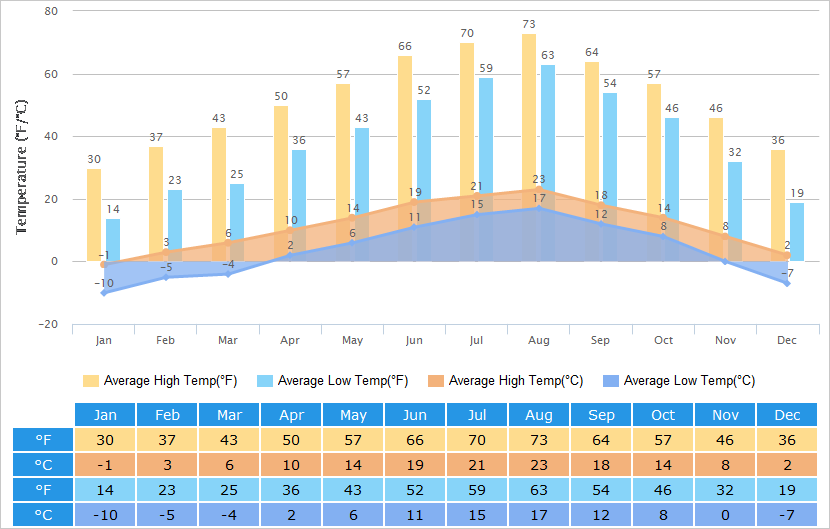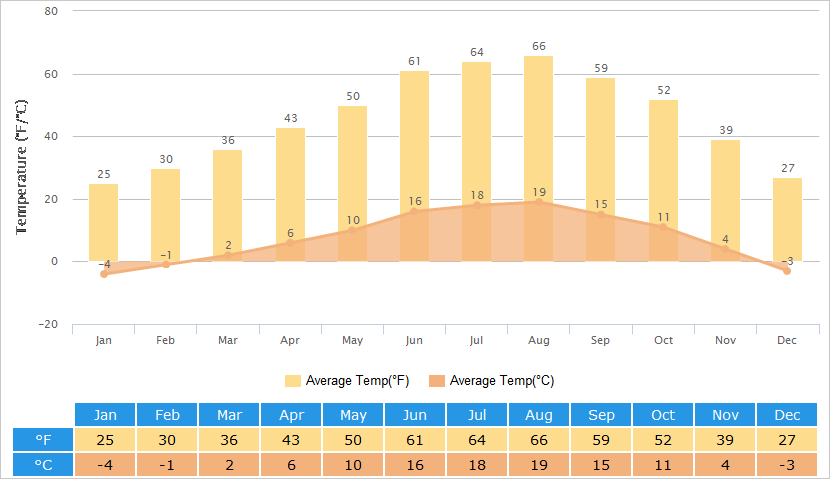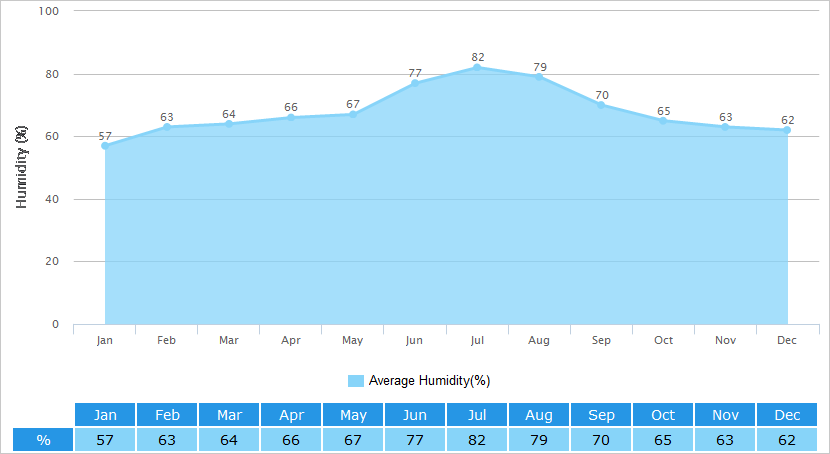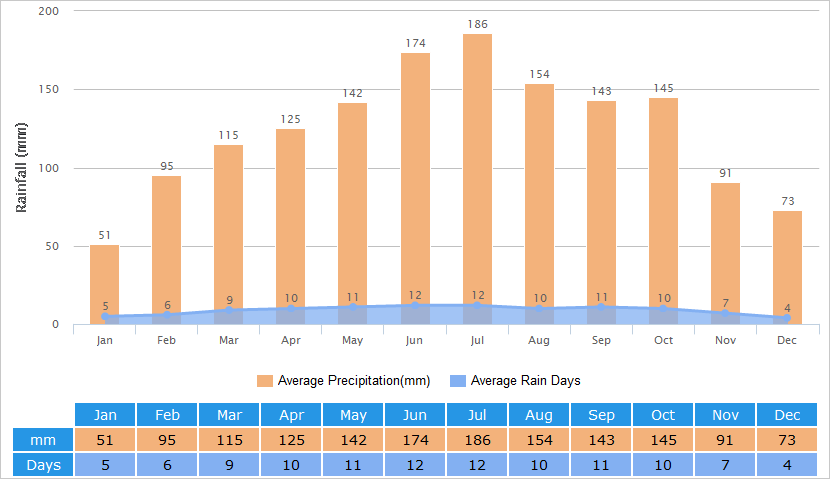Mount Fuji Weather
Best Time to Visit Mount Fuji
Spring, particularly April, and autumn, particularly November are the best time to visit Mt. Fuji, for the good weather, visibility, and charming cherry blossoms or red fall foliage. However, winter, having the highest visibility of the year, is considered as the best time to look Mt. Fuji into the distance. To climb Mt. Fuji, the hiking trails are opened only in summer, from early July to early September. Besides, the morning has a better a visibility than the afternoon, of course on clear days.
Mount Fuji Weather by Month
Averages for Mount Fuji 5th Station Weather




Mount Fuji Climate - Seasons & Travel Advice
Spring (March – May)
Spring is cool and pleasant indeed for sightseeing on the lower Mount Fuji, when the mean temperature is around 21℃ (69.8℉) with breezes and the cherry blossoms are in full bloom. Cherry blossoms flower a little later, generally starting in early April, in Mt. Fuji area than in its surroundings like Tokyo. In the lower mountain, one can wear in layers with thin sweater plus a trench coat. To late spring, thinner clothing are OK, such as long-sleeve shirt and sweatpants.
The mean temperature on the mountain slope is much lower, which can be as low as 6℃ (42.8℉) in April. If going up to the 5 Station on hillside, thick clothes like padded jacket or downcoat must be added.
Summer (June – August)
Summer is of course torrid in lower Mt. Fuji area, the same as the surroundings. When it comes to the hottest month, August, the average high temperature at the foot of Mt. Fuji is about 30℃ (86℉). June and July, the rainy months, receive a plenty of rainfall and cause high humidity, which leads to a poor visibility to Mount Fuji. Meanwhile, the snow cap of Mt. Fuji is likely to melt. The good thing is that the climbing trails are opened from early July to early September, when mountaineering enthusiasts can climb up to the volcanic crater. Summer clothes are absolutely proper under Mount Fuji, while thicker clothes like thick jacket and windbreaker should be worn to hillsides. Padded overcoat or other warm clothing are needed if climbing to the mountain top.
Autumn (September – November)
Autumn is a cool season to travel to Mt. Fuji, and the fall foliage is completely a highlight to admire. September is still somewhat hot in the lower mountain areas and gives a poor visibility as well. After, the weather gets cooler and cooler, and the visibility becomes better. The later you go, the cooler it is, and the better the visibility. In October, the mean temperature is around 11℃ (51.8℉) on hillsides; to November, it drops to 4℃ (39.2℉) or so. The fall foliage season around Mt. Fuji usually begins since mid-October, and ends in mid-late November. Blouse, thin sweater, thick overcoat, thick sweatpants, etc. are advised for Mt. Fuji during trip in autumn.
Winter (December – February)
Winter is the best time to admire Mount Fuji from a distance when the visibility is the best in a year. It is bitterly cold but rarely rains or snows. The mean temperature is below 10℃ (50℉) even in the lower mountain areas generally. To the 5th Station, the lowest temperature drops to about -10℃ (14℉) in January, the coldest month. The mountain top is covered by fresh and pure white snow during winter. Sweater, downcoat, padded overcoat, thermal shirt, and boots are appropriate for sightseeing there.